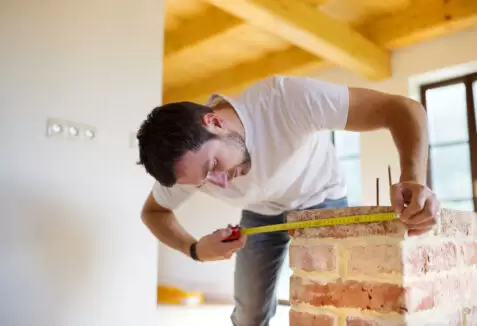Home renovations are not cheap. Whether you’re moving to a new home or looking to improve your current space, it’s not easy to accomplish everything you want without straining financially. That’s why you may want to figure out the most crucial projects that will improve your home and prioritize those. For instance, replacing a roof is much more important than changing your kitchen cabinets. It’s a long-term investment and an excellent way to improve your home’s value.
In a Consumer Survey, the number one factor consumers considered when determining which new roof to buy was durability, which was 88%, followed by longevity at 83%. So, how do you prioritize home projects without breaking the bank? Here are a few tips to help.
Have a Solid Plan
Home projects require good planning to avoid making costly mistakes. Sort through your projects to determine which ones are urgent and which can wait. On your high-priority list, you must also consider which projects will take more time and money. Some require thorough preparation, which takes time. For instance, adding a new floor requires more preparation than adding a water feature in your backyard. You must get a good picture of what is necessary and how you want the home to look when you’re done.
Evaluate the Needs of Your Home
Organize your home improvement projects room by room and create a realistic budget. Be sure to check the prices of items in your local market to improve accuracy in your budget. This will allow you to start with urgent projects that don’t require a lot of money. You can start with spaces used often, such as the kitchen and the bathroom. You don’t have to do a full renovation. You can divide the project into categories.
For instance, you can repaint, change cabinets and get new flooring in your kitchen without touching the layout. As for the bathroom, you can change the tiles and lighting for now. Your bedroom could do fine with new customizable lighting and fresh paint. Instead of building other rooms, which can blow up your budget, consider decluttering to make spaces more functional.
Put Safety Above Everything Else
Some home improvement projects don’t need to be about improving the appearance of the home but enhancing safety. While many projects deal with safety indirectly, getting rid of outdated plumbing features improves your home’s safety and saves you money. You will not have to deal with annoying leaks that could lead to health issues. Fixing your electrical system also ensures efficiency as there is less tripping of breakers.
Some of these projects can lead to costly repairs and replacements when ignored. Taking care of anything that helps your home run efficiently and safely is worth adding to your priority list. Remember, fixing that wire can prevent a fire that could have destroyed your new paintwork and improve the furniture.
Consider Repainting
Repainting has always been the cheapest way to give your home a refreshing look. A fresh coat of paint makes your home look new. Even if you just repainted your cabinet or front door, these changes can give your home the boost it needs to feel refreshed. According to House Grail, over 88% of people desire to stay home after repainting an interior room. If you’ve always wanted to change the color of your space, then this is the perfect moment.
Don’t Forget About Landscaping
Your home needs to look beautiful on the inside and outside. Be sure to determine what you must do to improve your exterior space. You can repair the exterior, add a few landscaping features, or simply plant flowers and other vegetation. Check if you need to repair anything, such as the roof and siding. Determining if there are leaks or worn-out materials and considering projects such as waterproofing. According to Waterproof magazine, 67% of all vertically-applied waterproofing products are liquid-applied membranes.
Improving your home on a budget is possible. You can do so much to make your home more comfortable, beautiful, safe, and high-value. Be sure to choose the right projects and hire the right people to avoid costly mistakes.

